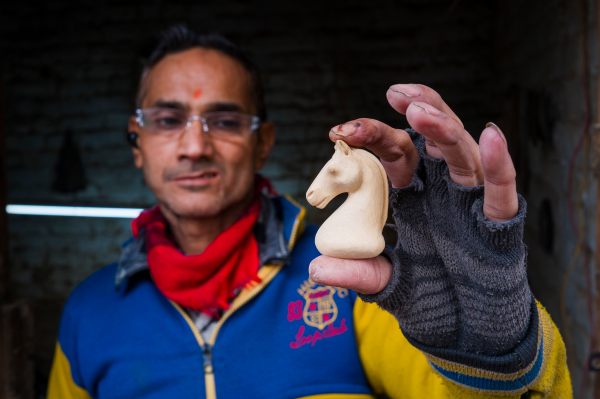Hand-Carved Chess Pieces From India
I remember being swept up by The Queen's Gambit just like everyone else who saw it. Finishing an episode and being like, "I wish I could play chess at some otherworldly level."
But it's a different TV depiction of chess that came to mind when I saw this Atlas Obscura story about hand-carved Indian chess sets:

It was an episode of The West Wing, where the president has just returned from India and had some beautiful chess sets that he wanted to hand out as gifts. He ends up playing both Sam and Toby at the same time, all while negotiating some international kerfuffle in the Taiwan Strait.
He gives the background of some of the sets, and though it's not lingered on for long, you do notice what beautiful pieces of work they are. I have no idea if the sets were plausible for what and where they were supposed to have originated, but I liked looking at them.
The Atlas Obscura piece seemed perfectly aimed at me, as if to say, "Are you fascinated by chess but don't have the brain for it? We got you."
But then I remembered I'm no woodworker, either. And never will be, at least not at these levels:
Of all the chessmen, knights are considered the most difficult and require the most skill to carve. While pawns and other pieces can be shaped under lathes, the knights—resembling horse heads usually with wild flowing manes—are carved completely by hand. A chess carver won’t graduate from pawn to knight or any easier piece to harder ones, but instead will learn his craft from the start of his career, usually from their father or a mentor from one of the well-established chess companies. Surinder Pal, a knight carver at the Chess Empire, learned from his father at 18 years old. Now, he has been working on the craft for over 35 years. With his advanced and highly specialized skill, he can make up to 30 simple knights a day, or spend up to three days on a single ornate knight.

Comments